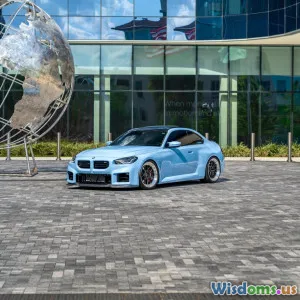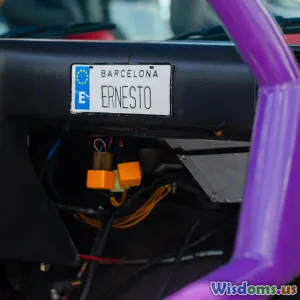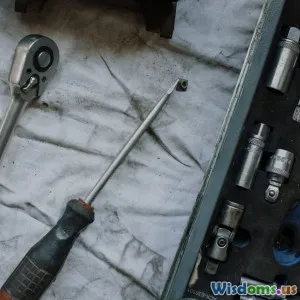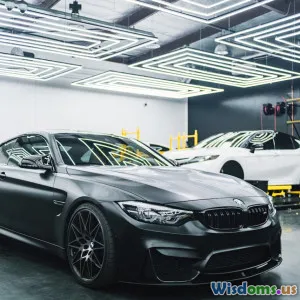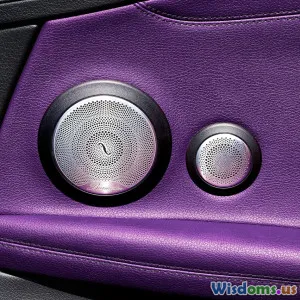
Unexpected Impacts of World Wars on Automobile Design
11 min read Exploring how World Wars reshaped automobile design through innovative technology, materials, and aesthetics with enduring impact. (0 Reviews)
The Unexpected Impacts of World Wars on Automobile Design
The roaring engines and sleek curves of mid-20th-century automobiles might seem worlds apart from the grim battlefields of the global conflicts known as the World Wars. Yet, the legacy of these early 20th-century conflicts extends far beyond geopolitics and history books—it profoundly influenced the very fabric of automobile design. From innovative engineering breakthroughs to material science developments and aesthetic evolutions, the World Wars catalyzed unexpected yet profound changes in how cars looked, performed, and were constructed. This article dives deep into the lesser-known ways that World Wars I and II reshaped automobile design, revealing fascinating stories of innovation born of necessity.
The Historical Context: War as a Catalyst for Innovation
Wars, despite their devastating human toll, often accelerate technological advancement due to the urgent need for improved equipment, transportation, and logistics. During World War I (1914–1918) and World War II (1939–1945), automotive technology was no exception. Traditionally, vehicle development had been incremental and founded on civilian needs, but the immense demands of global warfare forced manufacturers and engineers to rethink entire approaches to vehicles both on and off the battlefield.
Military needs spurred massive production scaling, new manufacturing techniques, and rapid innovation cycles. Innovations developed for motorized vehicles in combat often transitioned into peacetime applications, sometimes long after the wars ended. The car industry became a beneficiary of advancements originally targeted for tanks, trucks, aircraft, and armored vehicles.
1. Material Innovation: From Scarcity to Strength
Lightweight Yet Durable Materials
The materiel shortages exacerbated by the wars encouraged engineers to seek alternatives to heavy metals traditionally used in car construction. For instance, aluminum—a lighter and corrosion-resistant metal—came into prominence. Although aluminum was expensive and challenging to work with initially, the military’s demand to reduce aircraft weight advanced its production and fabrication techniques.
After WWII, civilian automobiles began embracing aluminum and other lightweight alloys, which contributed to better fuel efficiency and improved performance. A classic example is the BMW 328 from the late 1930s and into post-war production, which integrated lightweight construction techniques learned during wartime aircraft manufacturing.
Synthetic Materials and Plastics
The wars also accelerated the development of synthetic materials due to shortages of natural resources like rubber and leather. For instance, Buna rubber and synthetic substitutes became vital for tires and seating, pushing automakers to experiment with plastics and composites. These advances paved the way for the increasingly synthetic-based interiors and trims of postwar vehicles.
2. Engineering Breakthroughs: The Transition from Battlefields to Highways
Four-Wheel Drive and Off-Road Capabilities
Perhaps one of the most visible wartime innovations carried into civilian vehicles was the development and popularization of four-wheel drive (4WD) systems. During WWII, 4WD trucks and jeeps were crucial for transporting troops and equipment across varied and difficult terrains. The triumph of the Willys MB Jeep powerfully demonstrated how critical off-road capability was.
After the war, these rugged features captured civilian imaginations and mutated into the recreational SUVs and pickups that dominate today’s market. The Jeep’s design aesthetics and functional engineering became a blueprint for future utility and passenger vehicles that combined everyday usability with off-road robustness.
Aerodynamics and Streamlined Forms
The military’s quest for faster vehicles — especially aircraft — pushed aerodynamic designs to the forefront. Designers and engineers realized that reducing drag had a significant impact on speed and fuel economy.
These principles translated into automotive design notably after WWII. Cars like the 1949 Cadillac and the 1936-40 Tatra T77 used streamlined forms to improve airflow. The work of military aerodynamicists contributed directly to adoption of smoother, more futuristic shapes in passenger vehicles, setting trends for decades.
Innovations in Suspension and Drivetrain
Military vehicles required rugged yet reliable suspension systems to navigate unpaved roads and uneven terrain. Enhanced suspension designs developed out of wartime needs, such as leaf springs and hydraulic shock absorbers, were rapidly integrated into civilian vehicles after the wars.
Likewise, the evolution of drivetrain components—including improvements to transmissions and transfer cases—owed much to military R&D, delivering enhanced reliability, which set new standards poor civilian terrain handling.
3. Manufacturing Techniques: Precision and Mass Production Explosion
Assembly Line Advances
Though Henry Ford pioneered the assembly line concept before World War I, the wars accelerated the automation and scaling of manufacturing demands. Armament factories and vehicle producers were forced to optimize production speed without sacrificing quality. This evolution seeped into post-war automobile manufacture, making cars more affordable and consistently built.
Interchangeability and Modular Design
The urgency of wartime repairs underscored the need for interchangeable parts and modular designs. Vehicle designs shifted towards greater standardization, simplifying assembly and maintenance.
In post-war years, these ideas influenced the automotive sector by cutting manufacturing costs and simplifying repairs. The Goodyear Tire and Rubber Company’s wartime rubber durability tests, for instance, were applied directly to strong tire construction for civilian traffic.
4. Influencing Automobile Aesthetics
Military-inspired Styling
Military vehicles affected civilian car styling beyond function. The utilitarian and rugged looks of army transport trucks and the Jeep influenced car designers and consumers seeking vehicles embodying durability and freedom.
Camouflage paint schemes and matte finishes also fascinated car enthusiasts, indirectly inspiring color trends and custom paint jobs, especially in post-war America.
Dashboard and Instrumentation Design
The need for clear, reliable instrumentation in military vehicles, especially aircraft, ushered in improvements in dashboard layout and gauges. This emphasis on driver awareness and ergonomics filtered into post-war automobile cockpits, resulting in innovations such as improved speedometers, tachometers, and auxiliary gauges.
Moreover, illumination technology developed to aid night operations during war led to instrument panels better lit and easier to read after dark.
5. Societal Shifts and Economic Realities Impacting Auto Design
The Rise of Utility and Practicality
Post-war economies, especially in Europe and the U.S., saw societal shifts where compactness, fuel efficiency, and affordability became high priorities due to rationing and the need for reconstruction.
Military-derived vehicle technology allowed manufacturers to produce practical vehicles without compromising durability. The German Volkswagen Beetle, rooted in pre-war design but refined with post-war resource consciousness, became a symbol of economical automotive mobility.
Women Drivers and Changing Markets
With millions of women entering industry and transportation roles during the wars, automotive manufacturers recognized a newly emerging consumer demographic. Designs began favoring usability, ease of operation, and driver-centric ergonomics—developments partly spurred by wartime lessons on the importance of intuitive interfaces.
Conclusion: Legacy of Innovation Born from Adversity
The transformations wrought by World Wars on automobile design are a testament to human ingenuity under pressure. From aerodynamics to materials, from mass production techniques to functional aesthetics, the impact stretched far and wide. These wartime innovations fundamentally reshaped the car industry and helped usher in the modern automotive era.
In examining this history, it's clear that the turmoil of war indirectly drove peace-time progress, providing a rich legacy that continues to influence how cars are designed, built, and experienced today. Understanding this legacy not only enriches our appreciation of the vehicles we drive but also highlights the profound ways conflict has inadvertently propelled technological advancement in civilian life.
References:
- Nye, David E. When the Lights Went Out: A History of Blackouts in America. MIT Press, 2010.
- Lienert, Garry. "How World War II Gave Automobiles a Makeover." Automobile Magazine, 2014.
- National WWII Museum. "Impact of World War II on Civilian Transportation." Accessed 2024.
- Karl, Roger. "Military Innovations and Vehicle Design." Journal of Transport History, 2018.
Explore maps of technological shifts and trends in automobiles for those curious about history and mechanics alike.
Rate the Post
User Reviews
Popular Posts










